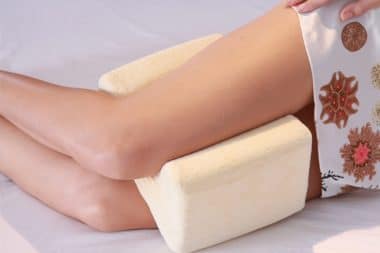If you are someone who already knows what plantar fasciitis is then skip ahead to the tips. However, if you are suffering from undiagnosed foot pain then it’s best you read this article from start to finish.
What is Plantar Fasciitis?
The ball of your foot is connected to the heel bone by a thin strip of tissue called the plantar fascia. This tissue is located at the bottom of the foot. Injuries to this tissue often cause intense pain and the condition is known as plantar fasciitis.
What Are the Possible Causes of Plantar Fasciitis?
Plantar fasciitis is caused by injury or excessive wearing of the plantar fascia (the tissue) and it can happen due to a number of reasons. It depends on person to person and the activity and type of stress they put on their feet. Some of the common ways people get plantar fasciitis are listed below.
- High Impact Activities Such As Running and Dancing
- Standing on Hard Surfaces for Long Periods of Time
- Having Flat Feet or a High-Arched Feet Shape
- Wearing High Heels Regularly
- Being Overweight
The tissue plantar fascia is responsible for absorbing shock when you are walking or doing any activity involving your feet. So, anything that can stress, strain, or injure the tissue can be the cause of plantar fasciitis.
How to Diagnose Plantar Fasciitis?
Plantar fasciitis is often easy to detect and doctors often diagnose the problem with a physical examination. Doctors might opt for an X-ray or an MRI if they believe the pain is caused by something else.
Tips for Preventing Plantar Fasciitis Pain
Wear Special Plantar Fasciitis Shoes: Your life doesn’t have to stop just because you have experienced plantar fasciitis pain before. You can buy shoes that are specially designed to support the tissue. These plantar fasciitis shoes have pronounced arches to provide deeper support thus preventing stress. These shoes also have cushioned heels and slightly more heel height. From hiking to formal dress shoes, you can find a plantar fasciitis shoe for all purposes of life.
Detect and Avoid High-Impact Activities: With the right plantar fasciitis shoes, you get a fair degree of freedom to work out and go for walks. However, if you are highly prone to pain, it’s best to identify the causal activities and stop them. You need to detect these activities at an individual level. Are you fine after walking but the pain comes back when you start jogging? If yes, try and replace jogging with other forms of cardio and then monitor the pain levels. Cycling, in general, can be a good replacement as it’s relatively low impact.
Strengthen Your Feet Muscles: The plantar facia is surrounded by a group of muscles. There are several exercises that help you work out these muscles and, in time, make them stronger. A stronger group of muscles prevents the fascia from excessive stress as they become more equipped to absorb a lot of the stress.
A quick YouTube search can help you find tutorial videos on how to do these plantar fasciitis exercises correctly. There are many licensed and practicing physical therapists who have YouTube channels and they often make plenty of videos. Use them as your resource to find new information and exercises.
Tips to Cope with Pain Caused by Plantar Fasciitis
Learn SOS Massage: There is little chance you are reading this article while suffering from acute plantar fasciitis. So, use this time to learn a few massage techniques you can use when you have pain.
One of the most basic techniques is to use your thumbs to press down on the fascia and then run it up from your heel to your toes. Start off with lower pressure and then gradually increase the pressure as your pain subsides. While massaging if you feel bumps then press down to relax those areas.
These massage or mobilization techniques help stretch the plantar fascia and cause the pain to subside to a point that it becomes bearable.
Frozen Water Bottle Technique: You can use a frozen water bottle and use it to stretch out your plantar fascia while providing a nice cooling effect. You obviously need to keep a water bottle frozen all the time so you can use it when the pain strikes.
To perform the technique correctly, lay the frozen water bottle flat on the ground and roll your foot over it. If the cold is too much, wear a sock to create a barrier between the bottle surface and your foot. The cooling sensation should provide instant relief and help reduce the inflammation.
Plantar fasciitis can be irritating, however, it’s also highly treatable and preventable. Do what you can by wearing supportive shoes and exercising to prevent this condition from affecting your life.








Reply